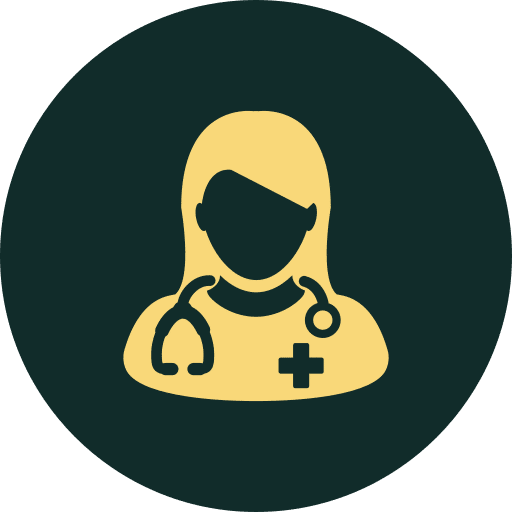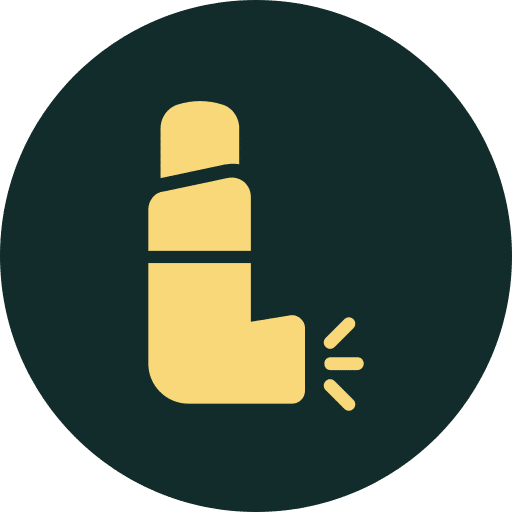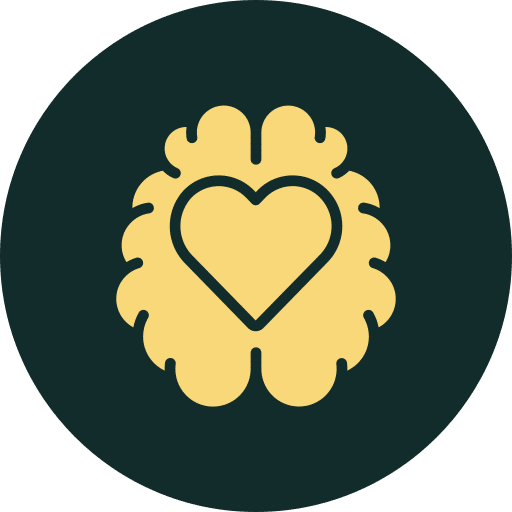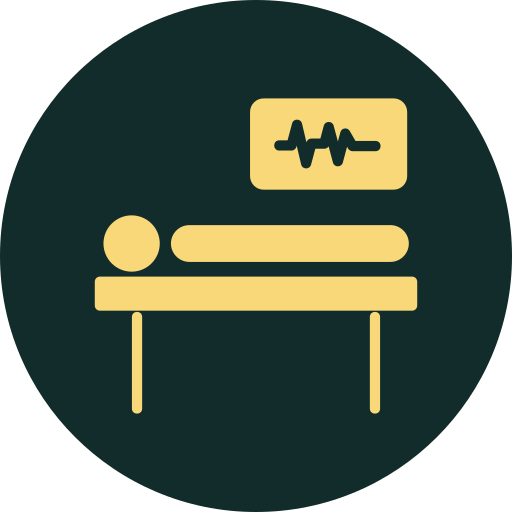
Fentanyl: Origins, Overdoses and Safety




What is Fentanyl?
Fentanyl is a strong synthetic drug in the opioid class. It’s FDA approved for pain relief (analgesic) and anesthetic. It’s around 50 times more strong than heroin and about 100 times more than morphine as an analgesic.¹
Fentanyl is similar to other opioid analgesics (i.e., morphine) that individuals use for pain. It produces effects such as
- Pain relief
- Euphoria
- Relaxation
- Drowsiness
- Sedation
- Dizziness
- Confusion
- Nausea
- Vomiting
- Pupillary Constriction
- Urinary Retention
It can be taken orally by tablet or pill, injected, sniffed or snorted, smoked, or spiked onto blotter paper. Individuals often abuse fentanyl patches by removing the gel contents from them and ingesting or injecting the contents. They also freeze the patches, cut them into pieces, and then place them in their cheek cavity or under their tongue.
Illicitly produced fentanyl is sold by itself or combined with substances like heroin and has been found in counterfeit pills that mimic pharmaceutical drugs like oxycodone.
The Origins of Fentanyl
Fentanyl came around in 1959 when it was first developed and then introduced as an intravenous anesthetic in the 1960s. It’s manufactured and distributed legally in the U.S., but legitimate fentanyl pharmaceutical products are redirected through
- Fraudulent prescriptions
- Theft
- Illicit distribution by doctors, patients, and pharmacists
Fatal overdoses linked with the abuse of fentanyl (clandestinely produced) and fentanyl analogs, as well as encounters with law enforcement, have increased markedly during the years 2011 through 2018.¹
Fentanyl analogs were associated with around 2,600 drug-related overdose fatalities each year in 2011 and 2012, according to the Centers for Disease Control and Prevention (CDC). However, the number of drug-related overdose fatalities that involved fentanyl and other synthetic opioids increased drastically each year from 2012 through 2018. More recently, there has been a re-emergence of abuse, trafficking, and distribution of illicitly-produced fentanyl and fentanyl analogs with an associated drastic increase in overdose deaths ranging from 2,666 in the year 2011 to 31,335 in 2018.¹
What is Fentanyl Used For?
Fentanyl is an opioid. It is a prescription painkiller that’s typically used in the form of a pill or patch. Doctors also use it in anesthesia. It’s used for the treatment of severe pain, such as during or after surgery, for example, or pain from cancer or a severe injury. It’s also used for chronic pain when weaker pain relievers are no longer effective.
Fentanyl is available by prescription only. It comes as
- Pills
- Tablets and lozenges that dissolve in the mouth
- Patches that are placed on the skin
- Injections (typically only given in the hospital)
- Nasal spray
Fentanyl patches are generally used to treat chronic or long-lasting pain. The doctor might also prescribe individuals with other types of fentanyl if they require extra pain relief when their normal painkiller wears off.
Doctors typically only prescribe fentanyl patches if an individual has already been taking other potent opioid painkillers. They’ll work out the amount of fentanyl to give the patient depending on the dose of opioids they’re taking. This helps decrease the risk of them overdosing.
Fake Pills and Laced Drugs
Drug dealers have been using fentanyl analogs as adulterants (lace) in illicit drug products since 1979, resulting in fentanyl-related overdoses clustered in different individual cities.²
The modern fentanyl adulteration epidemic is much wider in its geographic production, distribution, and number of fatalities. Overdose fatalities nearly quadrupled and went from 8,050 in the year 1999 to 33,091 in the year 2015.³ More than 100,000 individuals in the U.S. died from a drug-related overdose from May 2020 through April 2021. Around 64% of these fatalities were because of synthetic opioids like fentanyl and fentanyl analogs.⁴
Illicitly-manufactured fentanyl is synthesized internationally in Mexico, China, and India, then exported to the U.S. as pressed pills or powder. Along with this, the surfacing of the dark web (an anonymous and encrypted internet corner that’s a refuge for criminal activity) has cleared the way for the sale and shipment of fentanyl and other opioids through the U.S. Postal Service and other traditional delivery services.
Fentanyl is sold by itself and frequently used as an adulterant since it is highly potent and enables drug dealers to traffic smaller quantities while maintaining the drug effects expected by the buyers. Manufacturers sometimes add bulking agents to fentanyl, like baking soda or flour, to increase supply without increasing costs. Because of this, cutting a kilogram of fentanyl is much more profitable than a kilogram of heroin.
Sadly, the high potency of fentanyl also means that the tiniest amount can prove fatal. If the end user is unaware that they just bought an adulterated drug, this could quickly turn into a fentanyl overdose.
The Risk of Fentanyl Overdose
There are three phases to the opioid epidemic:
- First Phase: Prescription Opioids
- Second Phase: Heroin
- Third Phase: Powerful synthetic opioids like fentanyl
Many individuals use all three of these drugs, and many start using one and end up dying on another, unfortunately.
During the first prescription opioid phase, from the 1990s through 2010, there was a consistent rise in fatalities from overdoses of prescription opioids. Doctors and organizations began to retool their prescription guidelines as it became clear that there was a prescription-opioid problem. Not only this, but Purdue Pharma reformulated OxyContin, making it harder to crush and inhale, and U.S. federal and state agencies started to clamp down on the availability of these types of drugs.⁵
The problem, though, is that for unclear reasons, as this was going on, the heroin supply increased, and there was a significant drop in its price. Many opioid users switched to heroin since it was far easier to get a hold of than to try and obtain prescription opioids. U.S. National Center for Health Statistics data shows that between the years 2010 through 2016, there was a fivefold increase in heroin overdoses in the U.S.⁵
The contours of the epidemic then shifted around 2013 for the third time. Drug dealers looking to increase their heroin profits started mixing fillers and fentanyl into their products. Since fentanyl is more potent than heroin, it’s also more fatal. Overdose fatalities from fentanyl as well as similar molecules, saw a 88% increase per year between 2013 and 2016, according to the CDC.⁵
The number of fentanyl overdose fatalities among adolescents nationally is more than twice they were from the years 2010 through 2021 and increased another 20%, in the beginning, six months of 2021, according to a JAMA-published study. The main driver of these fatalities is synthetic opioids like fentanyl.⁶
It’s really not known what the lethal dose of fentanyl is since pills and individuals are different. What is known is that the smallest dose can be fatal, particularly if a person doesn’t regularly use opioids. Most overdoses recently aren’t due to prescription-dosed pharmaceutical-grade fentanyl. Rather, their due to the drug imported in pill form that resembles a prescription medication. This includes other substances like Xanax (anxiety medication) and heroin. So, users simply believe they’re taking a prescription medication at a safe dose, while in reality, they could be consuming a combination of lethal drugs.
Symptoms and Signs of Fentanyl Abuse
Fentanyl is a powerful drug that can easily be abused. Some common symptoms and signs of fentanyl abuse include:
- Slurred speech
- Confusion
- Slowed heartbeat
- Depression
- Weakness
- Labored breathing
- Difficulty Walking
In addition, a person may feel lightheaded, weak, sleepy, shaky, and itchy. They may suffer from weight loss, pinpoint pupils, nausea, vomiting, and visual hallucinations. Severe complications of fentanyl abuse include coma, unconsciousness, and death.
Overdose Prevention
The U.S. Drug Enforcement Agency states that many counterfeit pills are being produced to mimic opioids like hydrocodone (Vicodin), oxycodone (Percocet, Oxycontin), stimulants like amphetamines (Adderall), and alprazolam (Xanax). Others have an “M30” imprinted on them and are called “Oxy 30s” or “Blues”.⁷
Some ways to protect against overdose include:

Obtaining Medication from a Trusted Doctor
Bottom line: Individuals should not assume a pill is legitimate. The only way to know if medication is safe is if it’s prescribed by a reliable and trusted doctor or healthcare professional and a licensed pharmacist dispenses it.

Being Monitored in a Medical Environment
Even in controlled environments like hospitals, there’s still a risk of fentanyl use resulting in dangerously low breathing rates — the primary cause of opioid overdose fatalities. There’s no healthcare team available for individuals taking fentanyl in nonmedical environments to monitor their breathing rate and ensure their safety.

Distributing Naloxone (Narcan)
One way to prevent an overdose of fentanyl is by providing naloxone (Narcan) to bystanders for emergency purposes. Naloxone quickly reverses an overdose while it’s occurring. It blocks the effects of opioids. It restores normal breathing within two to three minutes in an individual with slow or stopped breathing due to an opioid overdose. For more potent opioids such as fentanyl, more than one naloxone dose may be needed.

Making Opioid Agonists More Available
Another measure that can be taken is to increase the availability of opioid agonists like buprenorphine and methadone. These reduce the cravings and withdrawal symptoms of opioids and help people remain in treatment. They also help reduce illicit drug use. Despite these medications’ lifesaving track records, their availability is still limited by an inadequate number of prescribers and restrictions on how and where they can be used.
Effects of Abusing Fentanyl
Long-term fentanyl abuse can lead to many adverse side effects, including physical and mental issues, beyond the symptoms and signs of this drug’s abuse.
Some physical fentanyl addiction side effects include severe digestive tract issues, which include possible bowel obstruction, constipation, and tearing of the bowel. Along with these, a person’s immune system weakens, making them sick more frequently and more susceptible to infectious diseases.
They can suffer from the following:
- Seizures
- Breathing difficulty
- Paranoia
- Mental issues
- Delusions
- Social withdrawal
- Personality changes
- Lack of motivation
When fentanyl is combined with other drugs like cocaine and heroin, it makes drug abuse even more hazardous. Depressant drugs like heroin make individuals vulnerable to coma, respiratory distress, and death.
Individuals also have the risk of addiction. If they try to stop taking the drug, they can suffer from withdrawal symptoms, including
- Confusion
- Chills
- Diarrhea
- Weakness
- Irritability
- Muscle and joint pain
- Tremors
- Loss of appetite
- Stomach cramps
- Restlessness
The only pathway to recovering from fentanyl or any other opioid addiction and experiencing lasting recovery is through detox and rehab. Individuals will require medical supervision during detox while their body eliminates the toxins of fentanyl. Healthcare staff will help keep the individual safe and comfortable while they go through the withdrawal effects of fentanyl. They can provide medication to help with this and make detoxing much more bearable.
After detox, the individual will enter rehab, which is a natural next step into sobriety. Without rehab, the individual has a much higher risk of relapsing, and, thus, risk of a fatal overdose.
Treatment for Opioid Addiction
Treatment for fentanyl addiction is the same as other opioid addictions — detox and rehab. Individuals can obtain both at a treatment center such as New Method Wellness in Orange County, CA. As mentioned above, individuals should never try to self-detox or detox at home without professional medical supervision, as it could prove deadly. Detox should always be done at a medical facility or a designated detox center like New Method Wellness.
During the treatment process, individuals will also receive counseling that helps reprogram their brains not to feel dependent on the drug and learn ways to live a sober life after they complete their treatment. They may be provided with small doses of methadone or buprenorphine, which will work to reduce their withdrawal symptoms and cravings. These medications bind to the brain’s same opioid receptors as fentanyl does.
New Method Wellness offers a variety of treatment options for opioid addiction, including Fentanyl addiction. These treatment options include

Dual Diagnosis Treatment
Dual-diagnosis treatment offers individuals an integrated, coordinated approach to addiction and behavioral health interventions when they struggle with co-occurring conditions. It requires multidisciplinary teams of healthcare professionals who all work together to offer seamless, client-centered services that range from social skills to holistic therapy with a consistent approach.

Medically Supervised Detox
The first step to lasting sober living is a medically-supervised drug detox program. New Method Wellness knows the importance of creating a solid foundation for long-term recovery and sobriety. Our accredited and licensed detox facilities offer Incidental Medical Services (IMS) to ensure our patients stay safe and comfortable. We provide round-the-clock professional staff support for our clients to overcome a physical dependency on drugs (or alcohol).
Our medically-supervised detox is designed to make the rehabilitative experience as comfortable and safe as possible. The withdrawal symptoms that result from the cessation of illicit drug use can lead to relapse quickly without the support and help of a skilled, compassionate team of providers. Our registered nurse or physician can prescribe medication to mitigate withdrawal symptoms and cravings safely.
A personalized approach is required for detoxification since recovery can be different for each individual. Various factors will determine how long a person will be in detox, and a team of providers and clinicians will need to assess each client based on specific criteria like:
- What type of drug they used
- What dosage of the drug they used
- What time and date of their last use
- Their history of usage
- How many times in the past they have tried to get clean
- What was the outcome of past sobriety attempts was
- How severe their addiction is
There’s no set length of time for the detox process. Detox will end once the person is safe and physically comfortable enough to move on to the next recovery step without chemical dependence.

Residential Treatment
Our residential treatment center in dual diagnosis treatment here at New Method Wellness is a live-in healthcare center that offers 24-hour support from highly skilled and licensed clinical staff, including substance abuse counselors, addiction psychiatrists, certified medical staff, and holistic therapists. Our treatment center resembles a home to make individuals feel like they’re “home away from home.” This eliminates the sterile office space setting, creating a more comfortable, warmer environment ideal for recovery.

Intensive Outpatient Treatment
In an intensive outpatient treatment for a dual diagnosis, individuals can typically expect the following types of services:
- Relapse prevention counseling
- Individual counseling
- Psychoeducational group counseling
- Skill development counseling
- Process groups
- Treatment of co-occurring conditions
- Alcohol and Opiate-blocking medication
The frequency and duration of IOP programs also vary. Under the American Society of Addiction Medicine (ASAM) criteria, clients must complete a minimum of nine therapy hours each week during their initial stage of treatment. Generally, three treatment hours will be scheduled three times a week, day or evening. Depending on the group’s activity (i.e., interaction vs. instruction), group counseling sessions may last between 30 to 90 minutes. Before clients can move on to the next, less intensive treatment stage, they’ll complete between four to eight weeks of treatment.
During your stay at New Method Wellness, individuals will benefit from approaches such as Cognitive-Behavioral Therapy (CBT), Dialectical Behavioral Therapy (DBT), holistic approaches, nutritional counseling, individual and group therapy, individualized treatment, medication-assisted treatment, and much more. Contact us to learn more about how we can help you find long-lasting recovery from fentanyl or other opioid addiction.
References
- Department of Justice/Drug Enforcement Administration. Drug Fact Sheet: Fentanyl. Retrieved on 11-17-2022 from:
https://www.dea.gov/sites/default/files/2020-06/Fentanyl-2020_0.pdf
- ACS Publications. Behind the Identification of China White. Theodore C. Kram, Donald A. Cooper, and Andrew C. Allen. Anal. Chem. 1981, 53, 12, 1379A–1386A. Publication Date:October 1, 1981
https://doi.org/10.1021/ac00235a790 © American Chemical Society
https://pubs.acs.org/doi/abs/10.1021/ac00235a790
- Centers for Disease Control and Prevention (CDC). Trends in Deaths Involving Heroin and Synthetic Opioids Excluding Methadone, and Law Enforcement Drug Product Reports, by Census Region — United States, 2006–2015 Weekly / September 1, 2017 / 66(34);897–903. Julie K. O’Donnell, PhD1; R. Matthew Gladden, PhD1; Puja Seth, PhD1.
https://www.cdc.gov/mmwr/volumes/66/wr/mm6634a2.htm
- Centers for Disease Control and Prevention (CDC). Trends in and Characteristics of Drug Overdose Deaths Involving Illicitly Manufactured Fentanyls — United States, 2019–2020. Weekly / December 17, 2021 / 70(50);1740-1746. On December 14, 2021, this report was posted online as an MMWR Early Release. Julie O’Donnell, PhD1; Lauren J. Tanz, ScD1; R. Matt Gladden, PhD1; Nicole L. Davis, PhD1; Jessica Bitting, MS
https://www.cdc.gov/mmwr/volumes/70/wr/mm7050e3.htm?s_cid=mm7050e3_w
- Nature. Tracing the US opioid crisis to its roots. Retrieved on 11-17-2022 from:
https://www.nature.com/articles/d41586-019-02686-2
- JAMA Network. Trends in Drug Overdose Deaths Among US Adolescents, January 2010 to June 2021
Joseph Friedman, MPH1; Morgan Godvin, BA2; Chelsea L. Shover, PhD3; et al. April 12, 2022. JAMA. 2022;327(14):1398-1400. doi:10.1001/jama.2022.2847
- Department of Justice/Drug Enforcement Administration. Counterfeit Pills. Retrieved on 11-17-2022 from:
https://www.dea.gov/sites/default/files/2021-05/Counterfeit%20Pills%20fact%20SHEET-5-13-21-FINAL.pdf
TAKE THE FIRST STEP
From all of us at New Method Wellness co-occurring treatment center, we wish you peace and serenity in knowing that you or your loved one will get the necessary help.
ACCREDITED BY:

